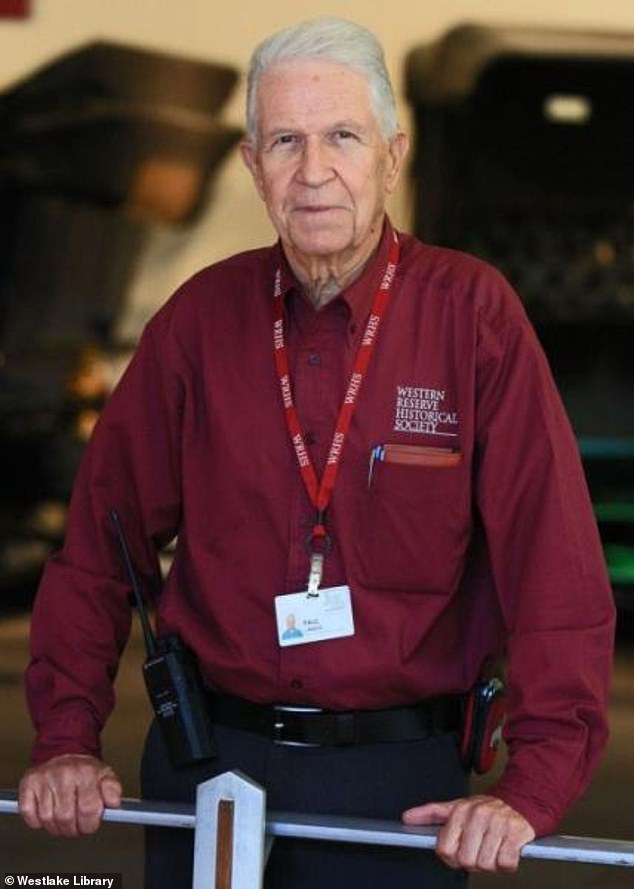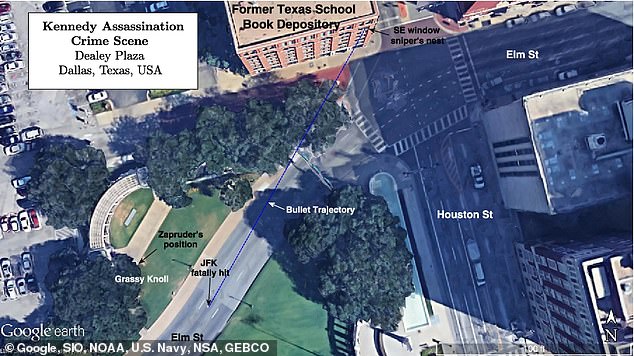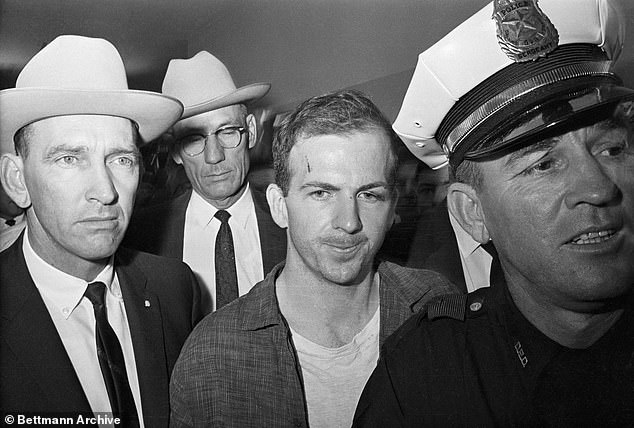Secret Service agent who was with JFK on day of his assassination breaks silence with claim that blows up the ‘magic bullet’ theory and suggests there WAS more than one shooter
A former Secret Service agent who was present at the assassination of President John F. Kennedy has come forward with a new claim that would debunk the “magic bullet” theory and raise questions about whether there was a second shooter .
Paul Landis, 88, broke his silence Saturday, nearly 60 years after Kennedy was shot dead in a motorcade passing through Dallas, to share his memory of the bomb with the New York Times.
Landis, who in 1963 was a young Secret Service agent assigned to protect First Lady Jaqueline Kennedy, said that in the chaos after the shooting he caught a nearly untouched bullet lodged atop the backseat of the open-top limousine, just behind the shooting. where Kennedy was sitting when he was assassinated, and placed it on the president’s hospital stretcher to preserve it for the autopsy investigators.
That bullet, the first piece of evidence recorded in the murder investigation, is believed to have been found on Texas Governor John Connally’s gurney for 60 years and was believed to have fallen free from a wound to his thigh.
It has long been known as the “magic bullet”: the bullet that allegedly passed through Kennedy’s neck from behind, then entered Connally’s right shoulder, struck his rib, exited under his right nipple, passed through his right wrist and struck his left shoulder. thigh.
A former Secret Service agent who was present at the assassination of President John F. Kennedy has come forward with a new claim that casts doubt on the ‘magic bullet’ theory

Paul Landis, 88, broke his silence Saturday, nearly 60 years after Kennedy was shot dead in a motorcade passing through Dallas on Nov. 22, 1963.
According to the official findings of the Warren CommissionKennedy was killed by a lone gunman, Lee Harvey Oswald, who fired three shots at the motorcade from the sixth floor of the Texas School Book Depository building with a 6.5-millimeter Mannlicher-Carcano rifle.
According to the report, one of the shots missed the column, another was the “magic bullet” that struck both Kennedy and Connally, and the final round fatally struck Kennedy in the head.
Now Landis says he believes the bullet he recovered from the limousine may have been undercharged and dislodged from a shallow wound in the president’s back, after which he fell back into the limousine’s seat when the fatal shot hit his head struck.
He theorizes that after he placed the bullet on Kennedy’s stretcher, it may have fallen onto Connally’s stretcher when they were pushed together.
It is also possible that the hospital worker who found the bullet and turned it over to the Secret Service incorrectly identified which gurney it came from, or that his account was garbled by investigators.
The bullet, which had been fired but was almost completely intact, was positively matched to Oswald’s Mannlicher-Carcano by ballistic analysis.
But if Landis’ claim is true, it suggests that the bullet marked as evidence “Q1” was not responsible for Connolly’s injuries, and that there was no so-called “magic bullet.”

According to the Warren Commission, Kennedy was assassinated by a lone gunman, Lee Harvey Oswald, who fired three shots from the sixth floor of the Texas School Book Depository.

Lee Harvey Oswald is shown here after his arrest on November 22, 1963. He was shot dead two days later by Jack Ruby as he was being transferred from the police station to the jail.
James Robenalt, an attorney and historian who has collaborated with Landis on a book he plans to release in October, believes the new story suggests the possibility of multiple shooters.
“If what he says is true, which I’m inclined to believe, this will probably reopen the second shooter question, if not even more so,” Robenalt told the Times.
“If the bullet we know as the magic or pristine bullet was put in President Kennedy’s back, that means the central thesis of the Warren Report, the single-bullet theory, is wrong.”
Robenalt explained in a separate essay for Vanity fair on Saturday: “First, if the ‘pristine’ bullet did not travel through both Kennedy and Connally and somehow end up on Connally’s stretcher, then it stands to reason that Connally would have actually been hit by a separate bullet , which came from above and came down. the backside.
“The FBI article shows that Oswald would not have had enough time to fire two separate shots so quickly that he would hit Connally after wounding the president in the back.”
The infamous Zapruder film shows that there was roughly a second between Kennedy and Connally’s physical reactions to the moment they were shot.
FBI experts estimate that it would take Oswald at least 2.3 seconds to fire, operate the rifle’s firing action, aim and fire another shot.
The shorter gap between Kennedy and Connally’s reactions has long been explained as being due to the fact that a single bullet struck both men, with Connally delayed slightly in realizing he had been shot.
The possibility of multiple shooters has been a popular theory since the immediate aftermath of the killing, with many pointing to the so-called “grassy knoll” along the motorcade’s route.
In addition, the ‘Triple Underpass’ would have provided an elevated sniper position for the column, and other tall buildings surrounded the book store.
Robenalt acknowledged in Vanity Fair that “neither this article nor Landis’ book has the insight or forensic expertise to venture new conclusions in this area.”
“Others will have to fully analyze the evidence to see where it now leads,” he added.
